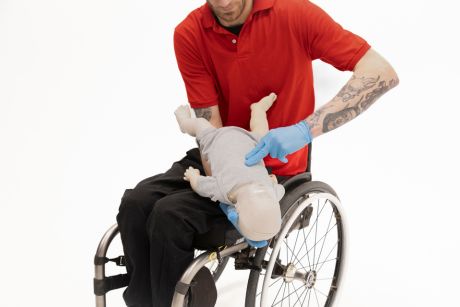National Volunteer Week is the perfect opportunity to thank the people who selflessly rush to help others during disasters and emergencies, assist with prevention and safety initiatives, or provide community health and wellness services. We are so thankful to the thousands of volunteers who make our work possible. We asked a few of our amazing volunteers why they dedicate their time and efforts into helping others and here is what some had to say:
94
Latest Posts
For Andrew DeGruchy, volunteering is a part of his life. The 30-year-old has been a volunteer firefighter and Lieutenant with Cold Lake Fire-Rescue for eight years. When evacuees from the La Ronge, Saskatchewan area were sheltered in Cold Lake, he got a first-hand look at the work Canadian Red Cross volunteers do; and that prompted him to become part of the disaster management team.
Debby Cote, Program Manager for Asia at the Canadian Red Cross took a moment to talk to us about the regional resilience initiative, and how the program is working to help build the resilience of partner Red Cross and Red Crescent societies.
Where in the world did people receive help from the Movement in 2016? A new report published by IFRC can tell you exactly where. The report gathers data from 190 National Societies worldwide, and offers insights into humanitarian and societal trends such as spontaneous volunteering; how volunteer numbers rise and then stabilize following a major disaster, and how indicators are affected by sociodemographic factors such as population size and the Human Development Index.
By 9 a.m., fog has burned off and I am already looking for shade as we begin the hour-long walk through the makeshift settlement in Kutupalong. We are headed to the Bangladesh Red Crescent Society mobile clinic. After many trips, we know the trail reasonably well, only occasionally needing the local volunteers to guide us through new market areas or construction sites, which seem to appear everyday along the route. We are from different worlds - Bangladesh, Myanmar and Canada - yet we chat easily about the work day to come. What was chaotic and overwhelming a few weeks ago has become familiar – it is easy to forget that this great sprawling village is one of the largest camps of displaced people in the world.
On December 11th, 2017 a fire broke out at the Crestview Housing Cooperative in Moose Jaw, Saskatchewan damaging several of the apartments and displacing a lot of the residents. In an overwhelming show of support, the citizens of Moose Jaw, with help from some teams from the Canadian Red Cross, rallied to the scene.
In this blog, we'll guide you on how to help a choking baby, where baby refers to an infant who is less than 1 year old. But remember, taking a first aid course is the best way to be prepared for situations like these!
Tragic events, like the bus accident which resulted in multiple deaths and injuries to the Humboldt Broncos hockey team can leave us feeling helpless, confused, angry, or worried. It is difficult to understand why things like this happen, or what it means for the future. In times like this, it is important for people to connect with each other, and support one another. Here are some tips.


